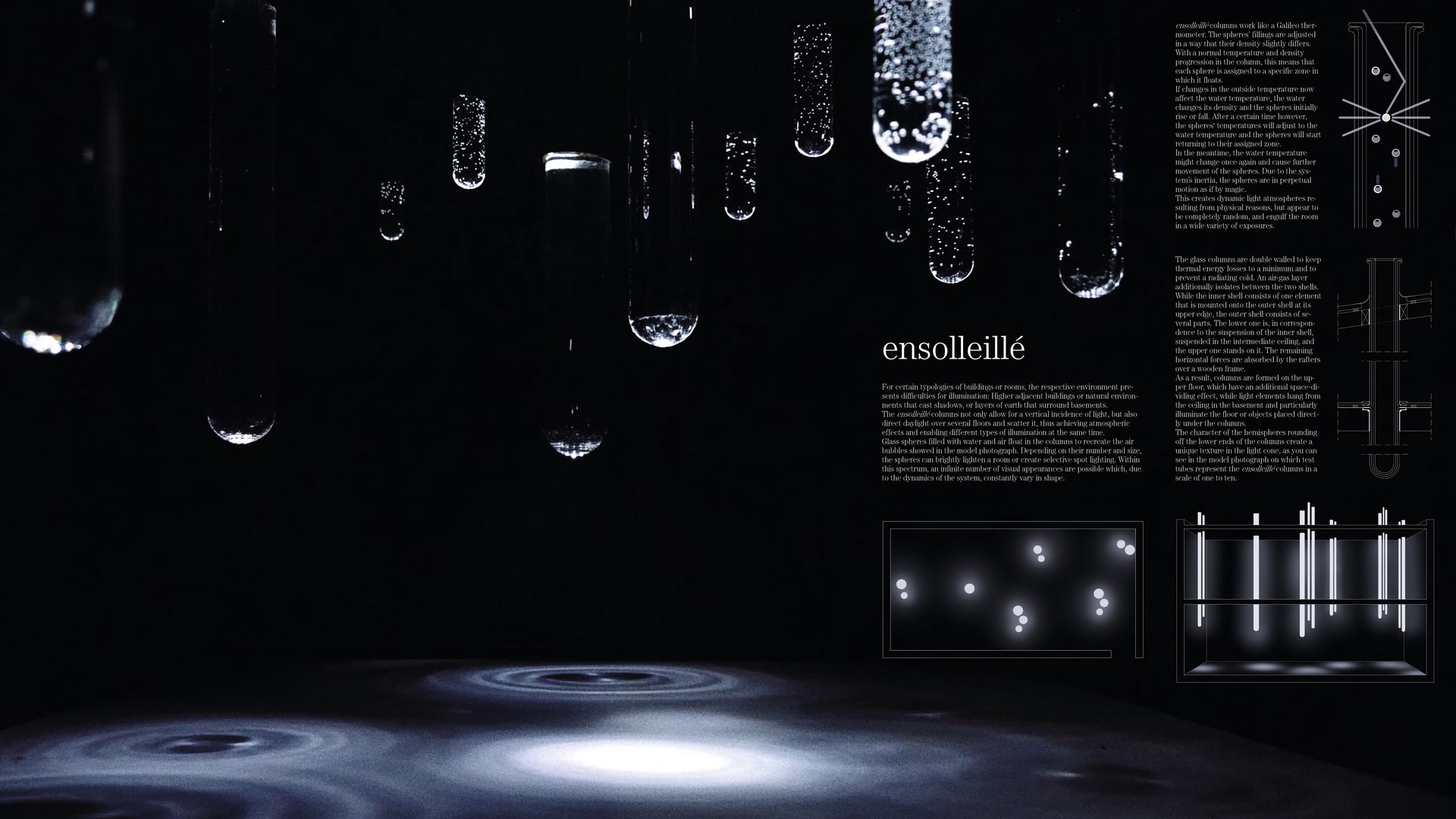Project Description
For certain typologies of buildings or rooms, the respective environment presents difficulties for illumination: Higher adjacent buildings or natural environments that cast shadows, or layers of earth that surround basements. The ensolleillé columns not only allow for a vertical incidence of light, but also direct daylight over several floors and scatter it, thus achieving atmospheric effects and enabling different types of illumination at the same time. Glass spheres filled with water and air float in the columns to recreate the air bubbles showed in the model photograph. Depending on their number and size, the spheres can brightly lighten a room or create selective spot lighting. Within this spectrum, an infinite number of visual appearances are possible which, due to the dynamics of the system, constantly vary in shape. ensolleillé columns work like a Galileo thermometer. The spheres’ fillings are adjusted in a way that their density slightly differs. With a normal temperature and density progression in the column, this means that each sphere is assigned to a specific zone in which it floats. If changes in the outside temperature now affect the water temperature, the water changes its density and the spheres initially rise or fall. After a certain time however, the spheres‘ temperatures will adjust to the water temperature and the spheres will start returning to their assigned zone. In the meantime, the water temperature might change once again and cause further movement of the spheres. Due to the system’s inertia, the spheres are in perpetual motion as if by magic. This creates dynamic light atmospheres resulting from physical reasons, but appear to be completely random, and engulf the room in a wide variety of exposures. The glass columns are double walled to keep thermal energy losses to a minimum and to prevent a radiating cold. An air-gas layer additionally isolates between the two shells. While the inner shell consists of one element that is mounted onto the outer shell at its upper edge, the outer shell consists of several parts. The lower one is, in correspondence to the suspension of the inner shell, suspended in the intermediate ceiling, and the upper one stands on it. The remaining horizontal forces are absorbed by the rafters over a wooden frame. As a result, columns are formed on the upper floor, which have an additional space-dividing effect, while light elements hang from the ceiling in the basement and particularly illuminate the floor or objects placed directly under the columns. The character of the hemispheres rounding off the lower ends of the columns create a unique texture in the light cone, as you can see in the model photograph on which test tubes represent the ensolleillé columns in a scale of one to ten.
